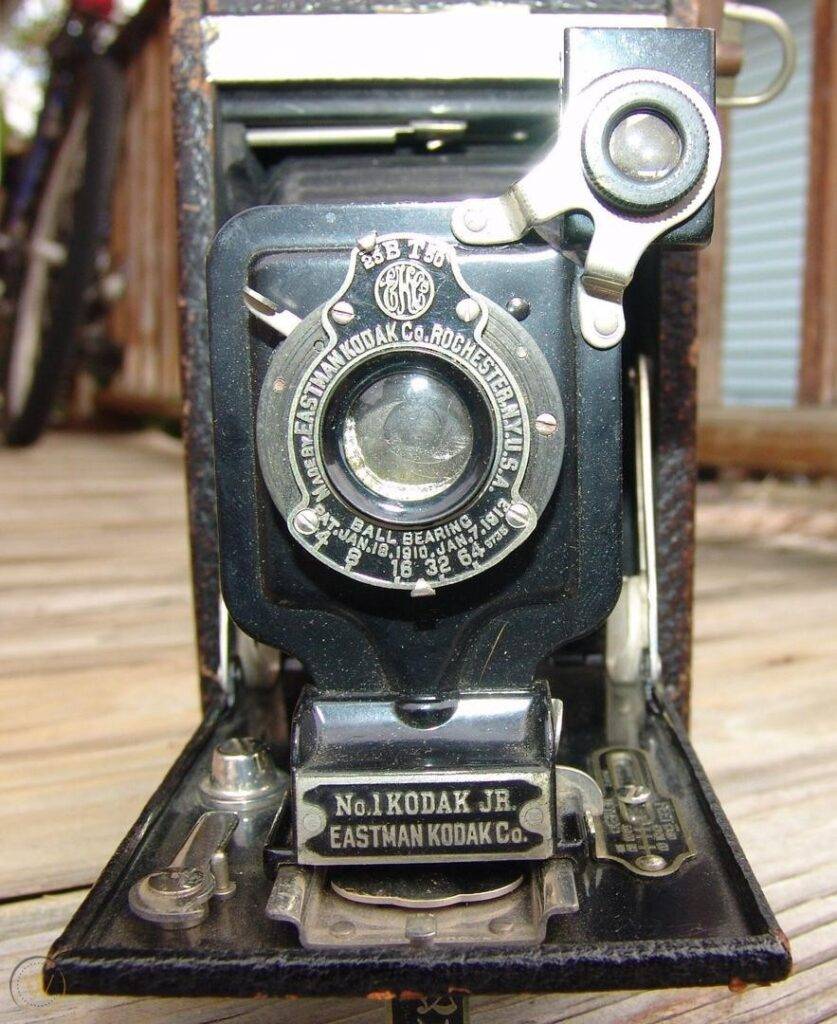History In Photographs
Be sure to check out HIP’s blog each day to learn about daily historical events, to read about featured photos, and to stay updated with current events. You can even become a fellow HIPster by interacting with our content and commenting on our posts with any information or connection you have to our content.
Expanding Your Photography Collection: An Introduction to Collecting Tintypes
Posted by Megan Shepherd on
Read more
Expanding Your Photography Collection: An Introduction to Collecting Tintypes
Posted by Megan Shepherd on
Read more
The Clues in the Frame: An Introduction to Clarence Trefry
Posted by Allison Radomski on
Read more
The Clues in the Frame: An Introduction to Clarence Trefry
Posted by Allison Radomski on
Read more
Positive Image: Women in Photography in the Early 1900s
Posted by Megan Shepherd on
With Women’s History Month already at its close, we at History in Photographs have been thinking about the role of women in early photography, and in particular, two women who are represented within our collection of negatives: Alice Curtis and Martha Hale Harvey. But before we dig into the stories of these two photographers, both of whom were active in the New England area between 1880 and 1920, we’d like to offer you a bit of background on the history of women in photography. Throughout the evolution of the medium, women have received far less attention and analysis than their male peers, which means that there’s often a lot less information available on their lives and work. However, even in photography’s earliest years, women immediately embraced this new technology, pushing the boundaries of the medium right alongside their male counterparts.
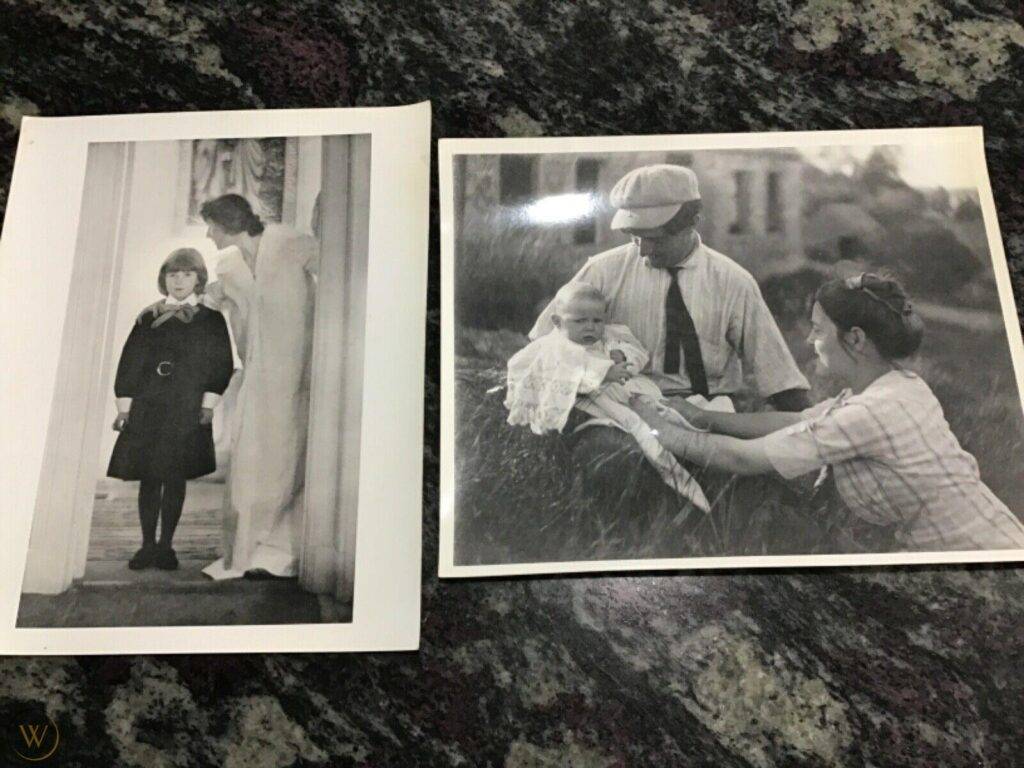
Pictorialism & Photo-Secession
As photography gained popularity at the end of the 19th century, a growing number of photographers wanted their medium to be taken more seriously as a fine art. This desire fomented the rise of Pictorialism, a movement within turn-of-the-century photography that embraced the manipulation of photographic materials as a means of greater personal expression.
What set the Pictorialists apart from other photographers was their emphasis on aesthetic intervention. In other words, Pictorialists didn’t want to simply document the world through mechanical means. They wanted to create their own unique vision of it by manipulating their medium in new and distinctive ways. Pictorialist photographers believed these interventions, often done within the darkroom, proved that photography was about more than just replicating a subject’s likeness. By demonstrating the medium’s artistic flexibility, Pictorialists sought to prove that photography should be on the same playing field as painting and sculpture. Pictorialists also attempted to achieve this aim by creating photographs that, in their opinion, bore a greater resemblance to paintings. For this reason, many Pictorialist photographers embraced romantic imagery and the use of soft focus in order to recreate a fine-art aesthetic.
A prominent group of pictorialists, dubbed the Photo-Secession led by Alfred Stieglitz, included many women prominently within the organization. Stieglitz, the husband of Georgia O’Keeffe, was a very famous photographer within the early 20th century and was instrumental in photography’s early decades as a fine art medium. A small group of New York-based photographers founded the Photo-Secession in 1902, which included two women, Gertrude Käsebier and Eva Watson-Schütze.
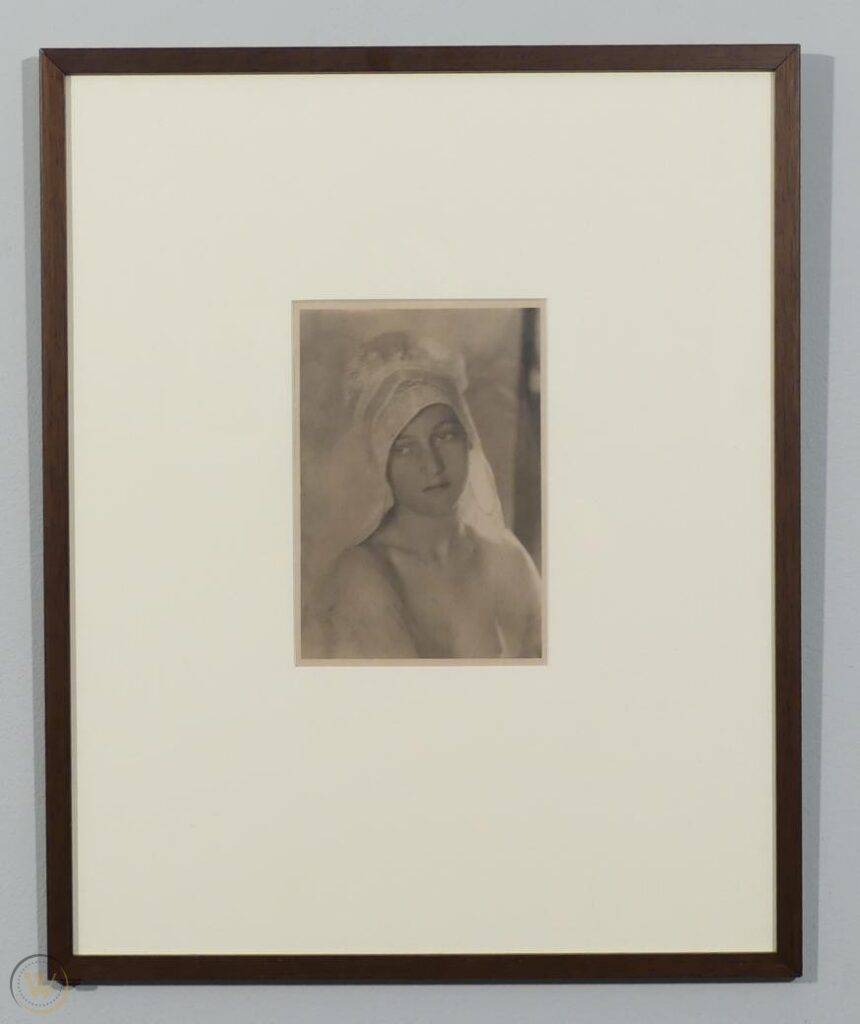
Gertrude Käsebier came to photography after raising three children, with motherhood and marriage often figuring within her visual narratives (in fact, she hilariously entitled an image of two bound oxen “Yoked and Muzzled – Marriage”). Perhaps her most famous series of images are her portraits of Native Americans, including many Sioux photographed while they were traveling with Buffalo Bill’s Wild West show. These images show a respect and sensitivity that was, unfortunately, uncommon towards Native Americans at the time.
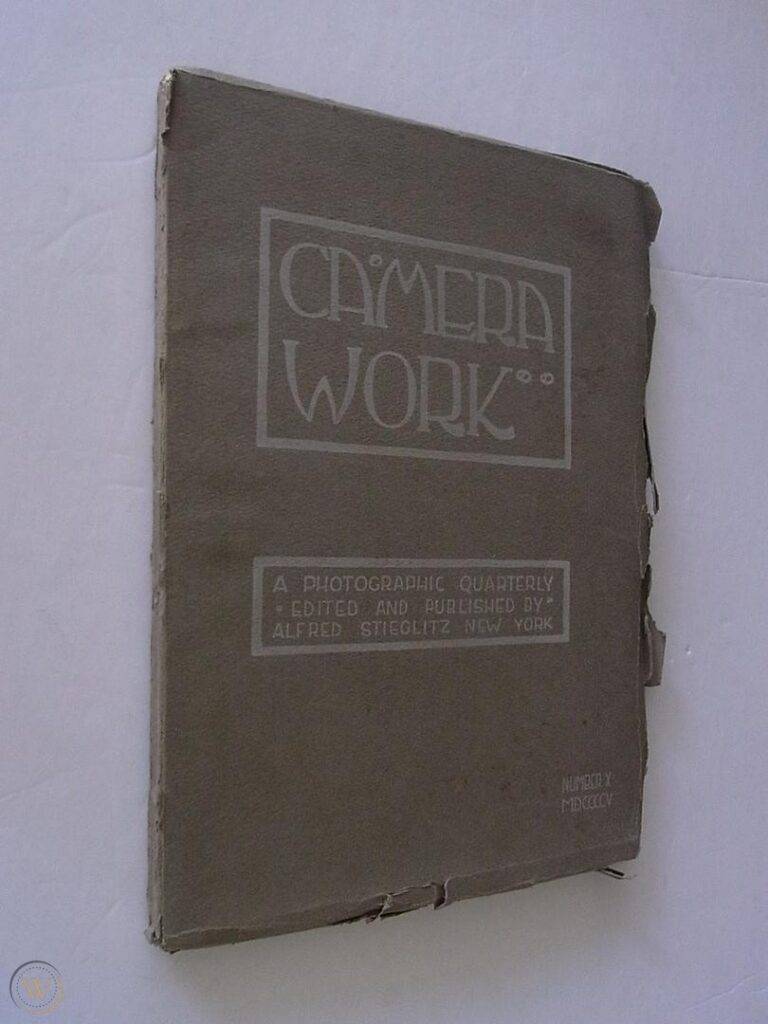
The other female co-founder of the Photo-Secession was Eva Watson-Schütze, who was known for her striking, soft-focus portraits of female subjects. Based in Chicago, she was one of the few founding members not based in New York, and her career-focused nature was bound closely with feminist ideas of the time. She believed that an artistic reckoning was imminent and that it would have women and photography at its center: “There will be a new era, and women will fly into photography.” While not founders of the movement, many other female photographers of this era were also involved with the Photo-Secession to varying degrees, like Mary Devens, Sarah Ladd, Ann Brigman, and Alice Boughton.
Feminism and feminist beliefs were popular with many of these early female photographers. Alice Boughton was a member of the Photo-Secession and also the New Woman movement, which emphasized a woman’s independence in mind, body, and spirit. New Woman members sought to challenge male-dominated society, asserting that women deserved to be treated as equals and to be seen as artistic peers. In fact, many women in this time period used photography as a means of expressing this independence.
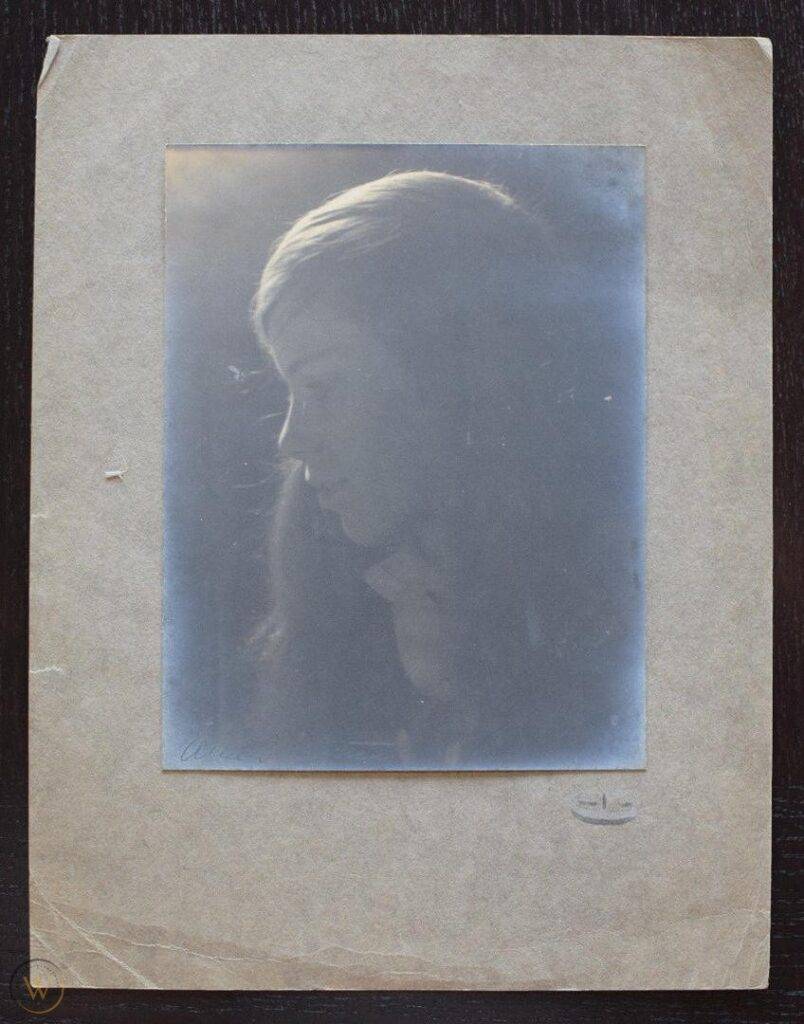
While not directly involved with the Photo-Secession, Zaida Ben-Yusuf was an English-born New Yorker who rose to prominence in the first few decades of the 20th century. She was a highly sought-after portraitist, known for photographing the most famous (and the wealthiest) in America, including future Presidents like Grover Cleveland and Franklin D. Roosevelt. Her work was included in just about every major American publication of the era, including The Saturday Evening Post, Ladies Home Journal, and The Cosmopolitan Magazine. She was even a spokeswoman for the Eastman Kodak Company.
Focusing on the Future
While it is easy to see the role women played in the early decades of photography, their contributions are still overlooked, willfully ignored, or simply forgotten even today. At the time, it was often unseemly for women to pursue such a profession, and even once it was no longer taboo, women faced many barriers within the field. Women’s work was regularly referred to as “inferior” and early art historical narratives place much greater emphasis on men. Women’s careers were also subject to the demands of family and relationships, with marriage typically dictating the end of a woman’s professional photography career. Luckily, not all information was lost and many of the wonderful images shot by these photographers still exist. In the 21st century, we have seen a movement towards repairing the damage caused by the art historical canon’s almost exclusively male emphasis.
Here at HIP, we’re excited to continue the conversation about women in photography and to help elevate their role within the public consciousness. Keep your eyes peeled—we’ll have more images and more stories of women photographers coming soon.
Megan Shepherd is a curator, fine art appraiser, freelance writer, and artist. She has worked in fine art museums for a decade and holds two master’s degrees in the field. When taking a break from art she enjoys science-fiction novels, trail running, and quilting.
This article was originally published by WorthPoint on WorthPoint.com
Read more
Positive Image: Women in Photography in the Early 1900s
Posted by Megan Shepherd on
With Women’s History Month already at its close, we at History in Photographs have been thinking about the role of women in early photography, and in particular, two women who are represented within our collection of negatives: Alice Curtis and Martha Hale Harvey. But before we dig into the stories of these two photographers, both of whom were active in the New England area between 1880 and 1920, we’d like to offer you a bit of background on the history of women in photography. Throughout the evolution of the medium, women have received far less attention and analysis than their male peers, which means that there’s often a lot less information available on their lives and work. However, even in photography’s earliest years, women immediately embraced this new technology, pushing the boundaries of the medium right alongside their male counterparts.

Pictorialism & Photo-Secession
As photography gained popularity at the end of the 19th century, a growing number of photographers wanted their medium to be taken more seriously as a fine art. This desire fomented the rise of Pictorialism, a movement within turn-of-the-century photography that embraced the manipulation of photographic materials as a means of greater personal expression.
What set the Pictorialists apart from other photographers was their emphasis on aesthetic intervention. In other words, Pictorialists didn’t want to simply document the world through mechanical means. They wanted to create their own unique vision of it by manipulating their medium in new and distinctive ways. Pictorialist photographers believed these interventions, often done within the darkroom, proved that photography was about more than just replicating a subject’s likeness. By demonstrating the medium’s artistic flexibility, Pictorialists sought to prove that photography should be on the same playing field as painting and sculpture. Pictorialists also attempted to achieve this aim by creating photographs that, in their opinion, bore a greater resemblance to paintings. For this reason, many Pictorialist photographers embraced romantic imagery and the use of soft focus in order to recreate a fine-art aesthetic.
A prominent group of pictorialists, dubbed the Photo-Secession led by Alfred Stieglitz, included many women prominently within the organization. Stieglitz, the husband of Georgia O’Keeffe, was a very famous photographer within the early 20th century and was instrumental in photography’s early decades as a fine art medium. A small group of New York-based photographers founded the Photo-Secession in 1902, which included two women, Gertrude Käsebier and Eva Watson-Schütze.

Gertrude Käsebier came to photography after raising three children, with motherhood and marriage often figuring within her visual narratives (in fact, she hilariously entitled an image of two bound oxen “Yoked and Muzzled – Marriage”). Perhaps her most famous series of images are her portraits of Native Americans, including many Sioux photographed while they were traveling with Buffalo Bill’s Wild West show. These images show a respect and sensitivity that was, unfortunately, uncommon towards Native Americans at the time.

The other female co-founder of the Photo-Secession was Eva Watson-Schütze, who was known for her striking, soft-focus portraits of female subjects. Based in Chicago, she was one of the few founding members not based in New York, and her career-focused nature was bound closely with feminist ideas of the time. She believed that an artistic reckoning was imminent and that it would have women and photography at its center: “There will be a new era, and women will fly into photography.” While not founders of the movement, many other female photographers of this era were also involved with the Photo-Secession to varying degrees, like Mary Devens, Sarah Ladd, Ann Brigman, and Alice Boughton.
Feminism and feminist beliefs were popular with many of these early female photographers. Alice Boughton was a member of the Photo-Secession and also the New Woman movement, which emphasized a woman’s independence in mind, body, and spirit. New Woman members sought to challenge male-dominated society, asserting that women deserved to be treated as equals and to be seen as artistic peers. In fact, many women in this time period used photography as a means of expressing this independence.

While not directly involved with the Photo-Secession, Zaida Ben-Yusuf was an English-born New Yorker who rose to prominence in the first few decades of the 20th century. She was a highly sought-after portraitist, known for photographing the most famous (and the wealthiest) in America, including future Presidents like Grover Cleveland and Franklin D. Roosevelt. Her work was included in just about every major American publication of the era, including The Saturday Evening Post, Ladies Home Journal, and The Cosmopolitan Magazine. She was even a spokeswoman for the Eastman Kodak Company.
Focusing on the Future
While it is easy to see the role women played in the early decades of photography, their contributions are still overlooked, willfully ignored, or simply forgotten even today. At the time, it was often unseemly for women to pursue such a profession, and even once it was no longer taboo, women faced many barriers within the field. Women’s work was regularly referred to as “inferior” and early art historical narratives place much greater emphasis on men. Women’s careers were also subject to the demands of family and relationships, with marriage typically dictating the end of a woman’s professional photography career. Luckily, not all information was lost and many of the wonderful images shot by these photographers still exist. In the 21st century, we have seen a movement towards repairing the damage caused by the art historical canon’s almost exclusively male emphasis.
Here at HIP, we’re excited to continue the conversation about women in photography and to help elevate their role within the public consciousness. Keep your eyes peeled—we’ll have more images and more stories of women photographers coming soon.
Megan Shepherd is a curator, fine art appraiser, freelance writer, and artist. She has worked in fine art museums for a decade and holds two master’s degrees in the field. When taking a break from art she enjoys science-fiction novels, trail running, and quilting.
This article was originally published by WorthPoint on WorthPoint.com
Read more
In Focus: Late 19th & 20th Century Photography
Posted by Megan Shepherd on
The Eastman Kodak Company
In the 1880s, George Eastman was developing a commercially viable portable camera that used flexible film instead of large glass plates to produce still photographs. Introduced in 1888, the “Kodak Camera” was one of the first mass-produced film cameras on the market. Retailing for $25 (about $692 today), it came preloaded with a 100-exposure roll of film and produced circular images roughly 2 ⅝” in diameter. This distinctive image shape makes it easy to identify images that were created with this Original Kodak, also known as the Kodak 540. Since film development had yet to become widespread, photographers had to mail the entire device back to Kodak to have the film developed and the enlargements (or prints) made. Its successor, the Kodak No. 1, was very similar but had a different shutter mechanism. Both were fixed aperture and somewhat unreliable but remained available until 1895 when production shifted to developing and manufacturing a new model – the Kodak Brownie.
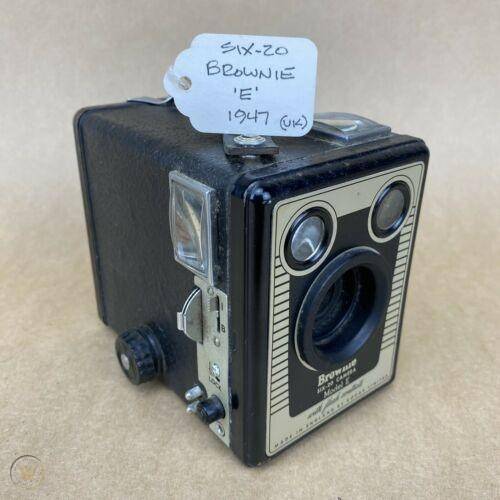
The Kodak Brownie made photography accessible for a much wider audience than ever before. Sold for $1 (about $31 today), the Brownie was the first camera to be mass-produced and marketed to the middle class. It was an instant hit. Thousands of cameras were sold, which put the power of photography into the hands of amateurs and artists alike. The Brownie used a different shutter mechanism than its predecessors and did not require that Kodak handle all aspects of development and printing. It was the most straight-forward, consumer-friendly camera yet, so much so that it inspired a new slogan: “You press the button, we do the rest.”
This ease of use translated into widespread popularity for the Brownie. In the 1890s and into the early years of the 20th century, photography became a national craze for Americans. “Kodak” entered the public lexicon and was used in many different forms. For instance, the term “Kodaking” became another word for “photographing,” and photo enthusiasts wielding a Kodak camera were often dubbed “Kodakers.” Amateurs took to the medium like wildfire, quickly forming photography clubs and associated magazines. No longer bound to only commemorating life’s biggest moments at great cost, amateurs led photography into the cultural vernacular by taking photos of everyday life and giving us glimpses into what was valued and important to people of the past.
In these early days of amateur photography, photographers were drawn to many of the subjects still enjoyed by today’s artists and amateurs. Important life events like weddings, annual parades, and parties were common subjects. People who could afford to travel often documented their adventures. Those less affluent often took photographs of their towns and nearby areas, capturing parts of life that hereto may have been overlooked within the medium. As the leisure class continued to expand, they snapped photos of the seaside and picnics, gatherings, and holidays. During this time, we also see photographs of babies and children, homes, and their interiors. Yes, people even took pet pics back then.
This era also saw a rise in more artfully posed portraits. In the 1890s and early 1900s, one particularly widespread trend was photographing subjects from behind. Typically shot in a reverse of ¾ profile, we often see women photographed with their back to the camera, their head turned over their shoulder with their face somewhat visible. In a similar vein, we see many images of individuals and couples shot from behind within a landscape, their bodies turned completely away from the camera, much like images we often see today of people visiting National Parks or taking in sweeping vistas abroad.
As photography became increasingly widespread, practitioners and critics alike began to debate the status of photography as an artistic medium. Differentiated from other arts by their unique equipment and materials, professional photographers of this era argued that photography was still an artistic medium in spite of their mechanical processes. A few decades later, in the 1920s and 30s, many documentary photographers like Ansel Adams, Walker Evans, and Dorothea Lange, proved that the medium’s documentary capabilities were by no means a barrier to its equally breathtaking artistry. As the medium continued to evolve in its technological sophistication and creative prowess, photography gradually secured its place in the art world.
Color Photography, 35mm Film & Beyond
Inspired by the popularity of the Brownie, other individuals and companies started to develop new photographic technologies. In 1912, Rudolf Fischer and Hans Siegrist developed a color film process that ultimately paved the way for the advent of Kodachrome, which was the first iteration of color film. In 1913, 35mm film was introduced and quickly became an industry standard after Leica introduced their first cameras. 35mm went on to become the most popular means of shooting film photography for roughly 60 years, only winding down (pun intended) with the introduction of commercial digital photography. Kodak would go on to continue introducing new technologies, like new generations of film, Super Glue, and the first digital camera.
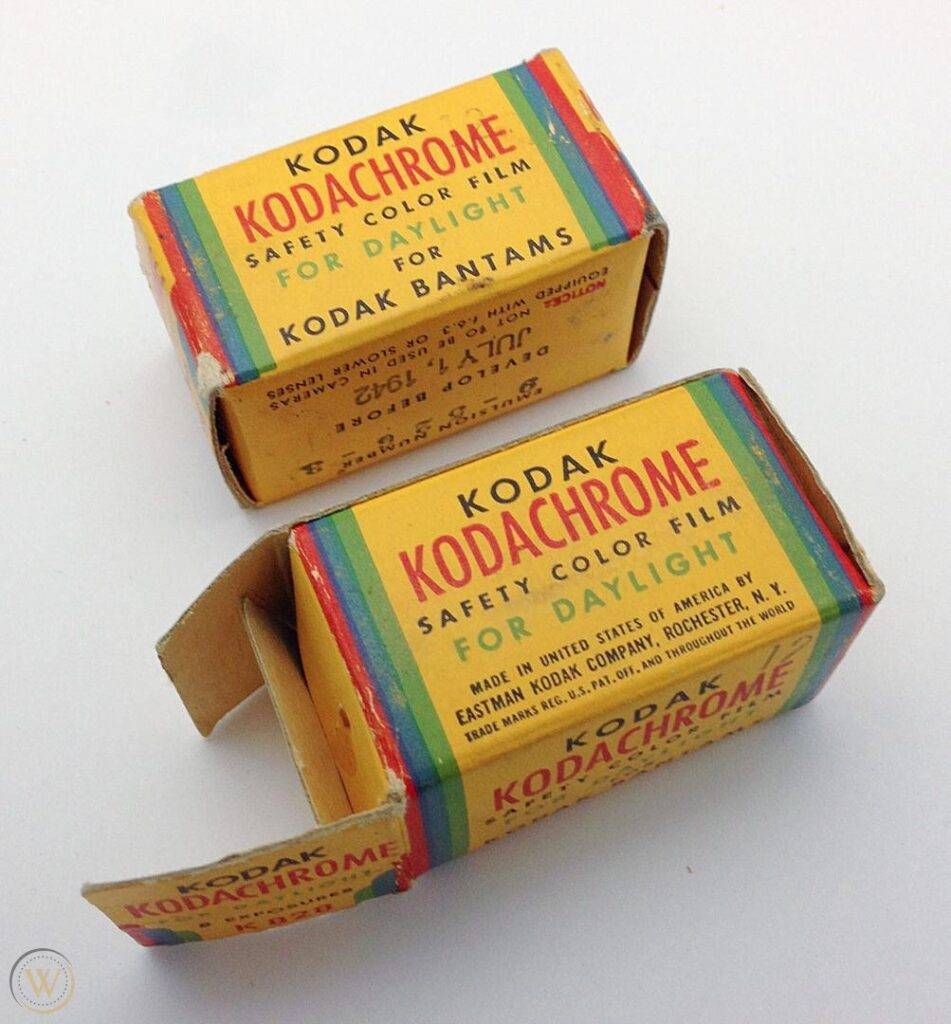
Since 1880, photography itself has become part of the fabric of everyday life, no longer bound to film, and accessible to nearly everyone today thanks to the rise of smartphones. So snap another photo of your dog and share it with everyone you know. It’s what your artistic forefathers would have wanted.
Megan Shepherd is a curator, fine art appraiser, freelance writer, and artist. She has worked in fine art museums for a decade and holds two master’s degrees in the field. When taking a break from art she enjoys science-fiction novels, trail running and quilting.
This article was originally published by WorthPoint on WorthPoint.com
Read more
In Focus: Late 19th & 20th Century Photography
Posted by Megan Shepherd on
The Eastman Kodak Company
In the 1880s, George Eastman was developing a commercially viable portable camera that used flexible film instead of large glass plates to produce still photographs. Introduced in 1888, the “Kodak Camera” was one of the first mass-produced film cameras on the market. Retailing for $25 (about $692 today), it came preloaded with a 100-exposure roll of film and produced circular images roughly 2 ⅝” in diameter. This distinctive image shape makes it easy to identify images that were created with this Original Kodak, also known as the Kodak 540. Since film development had yet to become widespread, photographers had to mail the entire device back to Kodak to have the film developed and the enlargements (or prints) made. Its successor, the Kodak No. 1, was very similar but had a different shutter mechanism. Both were fixed aperture and somewhat unreliable but remained available until 1895 when production shifted to developing and manufacturing a new model – the Kodak Brownie.

The Kodak Brownie made photography accessible for a much wider audience than ever before. Sold for $1 (about $31 today), the Brownie was the first camera to be mass-produced and marketed to the middle class. It was an instant hit. Thousands of cameras were sold, which put the power of photography into the hands of amateurs and artists alike. The Brownie used a different shutter mechanism than its predecessors and did not require that Kodak handle all aspects of development and printing. It was the most straight-forward, consumer-friendly camera yet, so much so that it inspired a new slogan: “You press the button, we do the rest.”
This ease of use translated into widespread popularity for the Brownie. In the 1890s and into the early years of the 20th century, photography became a national craze for Americans. “Kodak” entered the public lexicon and was used in many different forms. For instance, the term “Kodaking” became another word for “photographing,” and photo enthusiasts wielding a Kodak camera were often dubbed “Kodakers.” Amateurs took to the medium like wildfire, quickly forming photography clubs and associated magazines. No longer bound to only commemorating life’s biggest moments at great cost, amateurs led photography into the cultural vernacular by taking photos of everyday life and giving us glimpses into what was valued and important to people of the past.
In these early days of amateur photography, photographers were drawn to many of the subjects still enjoyed by today’s artists and amateurs. Important life events like weddings, annual parades, and parties were common subjects. People who could afford to travel often documented their adventures. Those less affluent often took photographs of their towns and nearby areas, capturing parts of life that hereto may have been overlooked within the medium. As the leisure class continued to expand, they snapped photos of the seaside and picnics, gatherings, and holidays. During this time, we also see photographs of babies and children, homes, and their interiors. Yes, people even took pet pics back then.
This era also saw a rise in more artfully posed portraits. In the 1890s and early 1900s, one particularly widespread trend was photographing subjects from behind. Typically shot in a reverse of ¾ profile, we often see women photographed with their back to the camera, their head turned over their shoulder with their face somewhat visible. In a similar vein, we see many images of individuals and couples shot from behind within a landscape, their bodies turned completely away from the camera, much like images we often see today of people visiting National Parks or taking in sweeping vistas abroad.
As photography became increasingly widespread, practitioners and critics alike began to debate the status of photography as an artistic medium. Differentiated from other arts by their unique equipment and materials, professional photographers of this era argued that photography was still an artistic medium in spite of their mechanical processes. A few decades later, in the 1920s and 30s, many documentary photographers like Ansel Adams, Walker Evans, and Dorothea Lange, proved that the medium’s documentary capabilities were by no means a barrier to its equally breathtaking artistry. As the medium continued to evolve in its technological sophistication and creative prowess, photography gradually secured its place in the art world.
Color Photography, 35mm Film & Beyond
Inspired by the popularity of the Brownie, other individuals and companies started to develop new photographic technologies. In 1912, Rudolf Fischer and Hans Siegrist developed a color film process that ultimately paved the way for the advent of Kodachrome, which was the first iteration of color film. In 1913, 35mm film was introduced and quickly became an industry standard after Leica introduced their first cameras. 35mm went on to become the most popular means of shooting film photography for roughly 60 years, only winding down (pun intended) with the introduction of commercial digital photography. Kodak would go on to continue introducing new technologies, like new generations of film, Super Glue, and the first digital camera.

Since 1880, photography itself has become part of the fabric of everyday life, no longer bound to film, and accessible to nearly everyone today thanks to the rise of smartphones. So snap another photo of your dog and share it with everyone you know. It’s what your artistic forefathers would have wanted.
Megan Shepherd is a curator, fine art appraiser, freelance writer, and artist. She has worked in fine art museums for a decade and holds two master’s degrees in the field. When taking a break from art she enjoys science-fiction novels, trail running and quilting.
This article was originally published by WorthPoint on WorthPoint.com
Read more
Look, Look, Look: A Conversation with Fine Art Appraiser, Jane Cofer
Posted by Allison Radomski on
Read more
Look, Look, Look: A Conversation with Fine Art Appraiser, Jane Cofer
Posted by Allison Radomski on


